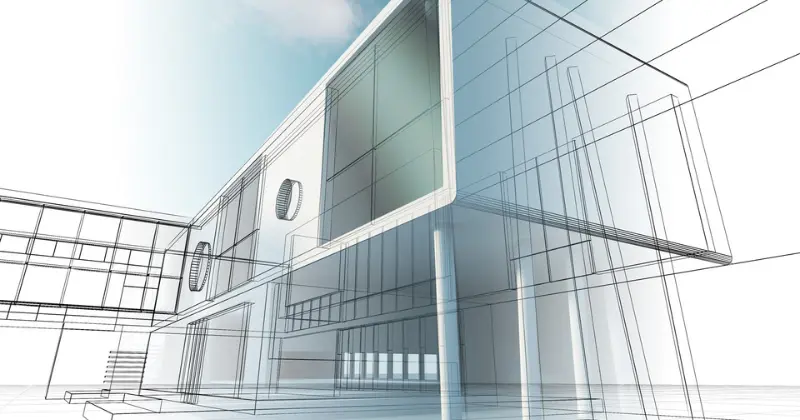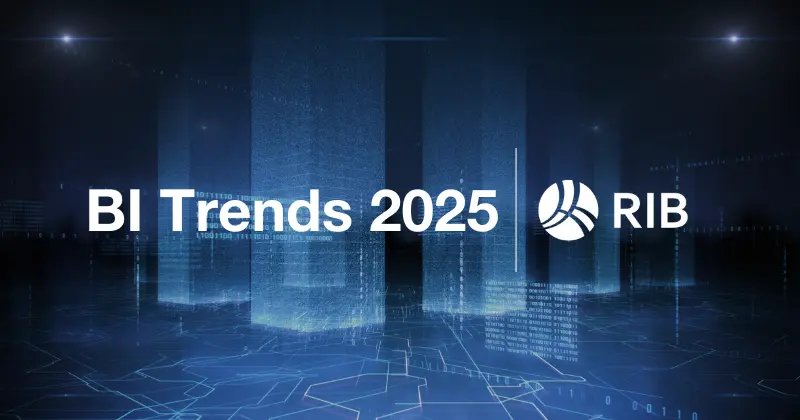11 mins read
BIM Construction Management Benefits and Best Practices

Not long ago, virtual 3D models of buildings, machines, and other complex objects were considered science fiction rather than reality. Although the benefits of moving from paper and pen to cyberspace have long been recognized, the computer technology needed to make BIM in construction management viable, safe, and effective has now truly arrived to reshape the industry.
How is BIM Used in Construction Management?

Building Information Modeling (BIM) is a process that utilizes 3D models and collaborative software platforms to visualize, design, and test new construction projects. Site survey data is used to create a detailed model of a proposed site. This becomes the starting point for architects, engineers, and construction managers as they plan, design, and complete the structure using a virtual toolkit. The benefits of BIM construction management include:
- Improved communication: The BIM process leverages cloud-based solutions to make models, supporting documents and data, and collaboration tools easily accessible to all stakeholders, wherever they are located. This allows the BIM manager and the other teams to work in unison while minimizing errors and improving decision-making.
- Cost estimation and control: BIM models achieve an exceptional level of detail and accuracy that includes every board, nail, brick, and beam. This information supports efficient quantity takeoff and estimation processes from inception through completion. Labor, equipment, transportation, and other costs can also be estimated and analyzed through the use of BIM in construction management.
- Risk management: BIM improves construction risk management strategies and mitigation practices by allowing hazards, safety issues, and risks to timelines and budgets to be identified and corrected early. BIM designs also reduce risks by utilizing virtual testing for structural integrity, seismic strength, and other important characteristics without requiring completed structures or physical models.
- Increased efficiency: BIM improves efficiency in many categories, beginning with collaborative design processes and extending to construction scheduling, fabrication, and maintenance. In addition to the structure itself, build sequences, project strategies, and prefabrication options are modeled to determine the most suitable path to completion.
- Facility management: Once a building is completed, the model becomes an ideal platform for renovation, maintenance, and facility management concepts that are much easier to pilot and evaluate in the virtual space. BIM management software can also be used to monitor and schedule ongoing maintenance tasks.
- Testing green concepts: A green building design encompasses natural light, water treatment, HVAC, and structural elements to minimize waste and optimize building energy efficiency. BIM construction management allows these goals to be visualized and achieved long before breaking ground.
Tips for Successful BIM Construction Management

The use of BIM in construction management brings many important benefits, but a successful implementation requires a structured approach to training, documentation, and integration. Following some common-sense practices helps to ensure the transformative potential of BIM is realized.
Come up with a BIM implementation strategy
A documented implementation strategy is one of the first and most important keys to success. Immediate goals for the first BIM project undertaken and long-term BIM implementation objectives should be considered to determine what industry standards will be followed, what procedures must be created, and how the roles and responsibilities of all team members will be defined and adjusted.
Choosing the right BIM software is another essential element of the implementation process since each available option will provide different features and benefits that should be weighed against the business’s needs. The solution chosen should be capable of integrating with existing construction software solutions and scalable enough to support anticipated growth.
Develop a standardized language
Standard naming conventions for objects and elements in the BIM models, such as doors, walls, beams, windows, and fixtures, should be established early to optimize communication practices and avoid misunderstandings. These conventions become essential during the design process to ensure clashes and conflicts in the model are interpreted and resolved quickly.
The importance of using a standardized language also applies to data environments and repositories. Standardized BIM nomenclature ensures data is entered and labeled consistently, making the database easily searchable and user-friendly while preventing errors. This consistency helps to make version control and interoperability across platforms and projects seamless.
Train your staff
BIM and construction management are only compatible when all team members and stakeholders have the training and support they need to correctly use BIM models and construction collaboration software. Internal or external BIM training courses for employees should emphasize collaboration practices and technical concepts along with:
- Basic navigation of the software interface
- Advanced features, including clash detection and energy analysis
- Data extraction for material quantity and construction cost estimation
- Proper use of standardized templates and libraries
- Adherence to industry or company-specific BIM guidelines and standards
A well-defined BIM training program ensures all team members understand the power and importance of BIM in construction. This allows them to hit the ground running and contribute immediately once the implementation is completed.
Support yourself with the right tools
BIM implementation is decidedly software-centric, but the advanced 3D modeling software at the core of BIM technology is just one important piece of the puzzle. BIM construction management also requires innovative software tools to convert the models into project schedules, perform structural analysis, and convert 3D models into detailed material lists and estimates.
For instance, RIB CostX allows BIM design and construction teams to perform accurate construction takeoffs and estimates based on BIM files to improve efficiency, reduce errors, and add value across all phases of the construction lifecycle. CostX also provides industry-leading embodied carbon accounting (6D BIM) capabilities to support sustainable building designs.
Measure results
Tracking and measurement are important for the overall BIM implementation and each project. Comparing implementation status to the timelines defined in the BIM execution plan (BEP) is a good way to measure success and identify gaps or weaknesses. Reporting on key performance indicators (KPIs) such as model accuracy, clash detection efficiency, and cost control helps ensure the important benefits of BIM construction management are realized consistently.
The standardized naming convention and common data environment (CDE) established early on to create a unified BIM ecosystem also pay dividends when tracking BIM project status and measuring results. Clear and unambiguous file conventions make checking model completion status easier, while accountability is improved by associating owners with each BIM task.
Have a continuous improvement mindset
The initial BIM implementation is the first step in a long and exciting journey. Complex BIM modeling, design, and analysis processes allow ample opportunities for continuous learning, with workshops and courses readily available for upskilling. Each team should continue refining collaboration and cross-training practices to retain and share this vital knowledge.
With each new BIM project, collective feedback from stakeholders and clients and organized ‘lessons learned’ reviews allow improvements to be rolled into future tasks. Data and KPIs should be reviewed to identify trends and milestone performance over time with the help of construction analytics software. This ongoing review process allows any negative outcomes, such as increased errors, clashes, model changes, or defects (in the model or the field), to be analyzed and corrected.
What Is the Future of BIM in Construction?
Building Information Modeling technology has come a long way since the first Building Description System (BDS) merged interactive graphics with relational databases in the 1970s, and it is still in its infancy. In the years ahead, emerging technologies like artificial intelligence (AI), augmented reality/virtual reality (AR/VR), and the Internet of Things (IoT) will improve data analysis and decision-making capabilities while allowing stakeholders to take a virtual walkthrough of proposed or existing structures.
As the technology improves, we will also see BIM and digital twins that mirror physical behavior in the digital realm playing a more significant role in infrastructure and facility management. IoT sensors will convert safety and maintenance issues in the field into real-time notices and alerts on the computer screens of BIM users. As the software solutions become more affordable and user-friendly, BIM will also play a larger role in ongoing asset management and energy optimization practices.
If you are curious about the history of BIM, read our insightful blog post on the topic!
Conclusion
BIM in construction management can produce a long list of efficiency, communication, and risk management benefits, but only when supported by a carefully planned and executed BIM implementation process and the right combination of advanced BIM software tools and capabilities.
Along with effective cost estimation and takeoff from 3D models, RIB CostX, our BIM management software, supports 5D (cost and schedule optimization) and 6D BIM implementation while providing built-in viewing tools. This empowers teams to transform how they design, construct, and manage their projects. If you are ready to discover how BIM can address your business’s unique challenges, get your free demo of RIB CostX today!

Most Recent
11 mins read
10 mins read
10 mins read
29 mins read
Blog Categories

Ebook











